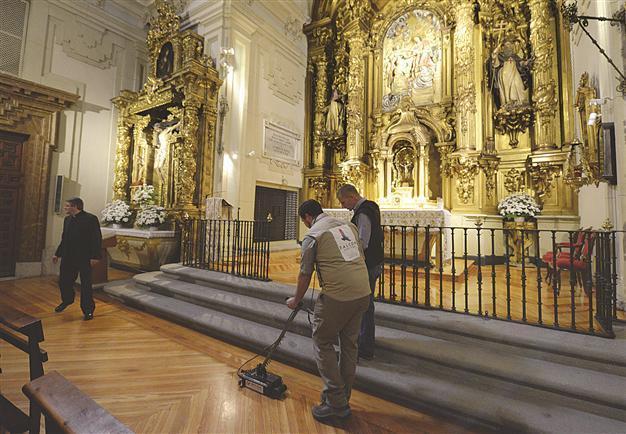Quest for Cervantes' remains goes deeper in Madrid
MADRID - Reuters

A ground-penetrating radar is searching for the remains of Spanish writer Miguel de Cervantes four centuries after his death, in the center of Madrid. AFP Photo
A team searching for the lost remains of Miguel de Cervantes has detected potential burial sites under a convent in Madrid and wants to excavate to verify whether the creator of Don Quixote lies under the centuries-old building.Almost 400 years after Spain’s most celebrated writer died, a group of historians and forensic experts used ground-penetrating radar in April to explore the earth under the brick-walled convent in the heart of the capital.
The researchers said the radar detected underground anomalies consistent with gravesites. The search also showed that the crypt under the transept of the convent’s church had a larger number of burial niches than previously thought, they told a news conference on June 9.
Without opening the burial chambers in the crypt and digging into possible burial sites outside it, they said they cannot know if Cervantes’ remains are there.
“We still have hope that if Cervantes’ remains were not moved they have to be somewhere under this site,” said Francisco Etxeberria, a forensic anthropologist who analysed the results of the searches. Luis Avial, who conducted the search with the ground-penetrating radar equipment, said he has identified exactly where archaeologists would have to focus their search for bones that would meet the description of Cervantes: a man over 50 with wounds to his left arm and chest.
Born in 1547, Cervantes’ Don Quixote is recognized as one of history’s greatest literary works and considered a precursor of the modern novel. He was buried in Madrid after his death in 1616 - the same week in which William Shakespeare died.
Experts believe Cervantes’ remains could be under the 17th-century convent.
















